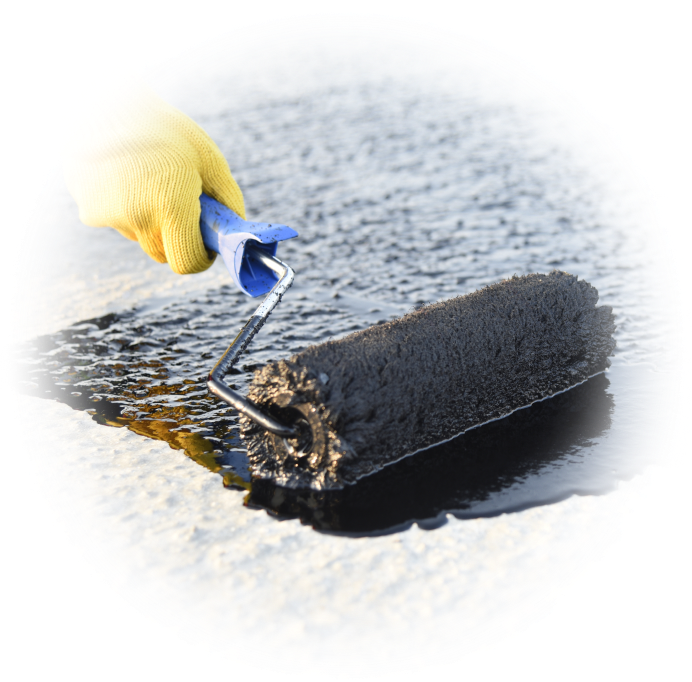Concrete Waterproofing
Home / Services / Injection & Grouting System / Concrete Waterproofing
Concrete is durable—but not impervious to water. Without adequate protection, water ingress can compromise its structural integrity, leading to cracks, corrosion, and long-term damage. Our concrete waterproofing solutions are designed to safeguard critical infrastructure, offering long-lasting protection for commercial, industrial, and government facilities across Singapore. Whether applied during construction or as a remedial treatment, our systems provide reliable defence against moisture intrusion.
Why Is Concrete
Waterproofing Necessary?
Concrete may appear solid, but its porous nature allows water to seep in over time. Without a robust concrete waterproofing system, moisture can travel through capillaries within the structure, causing rusting of reinforcement bars, weakening of the concrete matrix, and eventual structural failure. In environments exposed to high humidity, rainfall, or hydrostatic pressure—such as basements, tunnels, and retaining walls—waterproofing becomes a critical part of long-term structural performance and safety.

Benefits of Concrete Waterproofing
Early detection of water ingress is essential to prevent extensive damage and initiate timely leakage repair works. Look for these tell-tale signs:
Prevents Water Ingress
A high-performance waterproofing system blocks water pathways, protecting structures from leaks, seepage, and flooding-related issues.
Enhances Structural Durability
Preventing moisture from reaching internal reinforcements helps maintain load-bearing capacity and extends the structure’s service life.
Minimises Maintenance Costs
Effective concrete waterproofing reduces the need for frequent repairs, protecting against corrosion, surface damage, and internal deterioration.
Improves Indoor Conditions
By reducing dampness, waterproofed concrete contributes to healthier environments—free from mould, mildew, and air quality issues.
Supports Compliance and Asset Value
Proper waterproofing helps meet building code requirements and ensures that commercial and government facilities maintain their asset value over time.
Techniques for Concrete
Waterproofing
Surface Coating
Liquid-applied membranes form a waterproof film over concrete surfaces, offering flexible protection against water ingress and surface wear.
Crystalline Waterproofing
Applied as a slurry or dry-shake, these products penetrate concrete and form insoluble crystals within capillaries, blocking water movement internally.
Cementitious Waterproofing
A mix of cement-based compounds and waterproof additives that bond directly to concrete, suitable for basements, water tanks, and wet areas.
PU Injection and Grouting
Used to seal cracks and joints, PU injection grouting offers rapid and reliable waterproofing for existing structures experiencing active leaks.
Waterproofing Membranes
Sheet membranes are installed below or above-grade to prevent water penetration, commonly used in foundations and below-slab systems.
Process of Concrete Waterproofing
ADCOS Asia offers industry-grade systems to treat and prevent water ingress across complex structures. Our leakage repair methods are engineered for large-scale and government projects, ensuring long-term protection in critical environments:
Site Inspection and Diagnosis
We assess the site’s exposure, existing damage, and structural layout to recommend the most suitable waterproofing approach.
Surface Preparation
All surfaces are cleaned, repaired, and prepared to ensure strong adhesion and optimal performance of the chosen waterproofing system.
Material Selection and Application
Based on site conditions, we apply the appropriate solution—be it coating, crystalline, membrane, or injection—to ensure complete coverage and sealing.
Curing and Quality Checks
The waterproofing system is cured and tested for consistency, adhesion, and effectiveness. A final inspection is carried out to validate coverage.

Maintenance Tips for Concrete
Waterproofing
Maintaining your concrete waterproofing system is essential for long-term effectiveness. Regular inspections should be scheduled to check for surface wear, joint movement, or new cracks. Keep drainage systems unblocked to reduce hydrostatic pressure against waterproofed surfaces.
When cleaning treated areas, avoid abrasive tools or harsh chemicals that may degrade protective coatings. Should minor damage occur, prompt patch repair or injection sealing will prevent more significant issues from developing.
Frequently Asked Questions
What are the limitations and potential challenges of concrete waterproofing?
While concrete waterproofing systems are highly effective, limitations may include poor adhesion on dirty or damaged surfaces, or reduced performance if application guidelines are not followed. Professional installation is key.
What are the cost considerations for concrete waterproofing?
Costs depend on the size, complexity, and method used. While upfront costs may vary, concrete waterproofing is a cost-effective investment that prevents expensive long-term repairs and water damage.
How long does concrete waterproofing last?
With proper installation and maintenance, waterproofing systems can last 10–25 years or more. Performance depends on environmental exposure, materials used, and ongoing care.
Is concrete waterproofing necessary for above-ground structures?
Yes. Even above-ground elements are exposed to rain, humidity, and thermal stress. Waterproofing protects facades, balconies, and rooftop slabs from surface damage and internal degradation.
Can existing structures be retrofitted with concrete waterproofing?
Absolutely. Remedial waterproofing, including PU grouting and coatings, can be applied to existing concrete to restore protection and seal leaks without structural overhaul.


 ADCOS Asia
ADCOS Asia